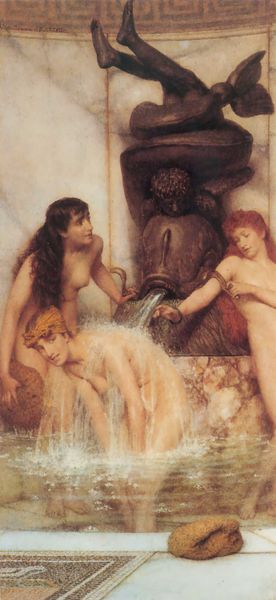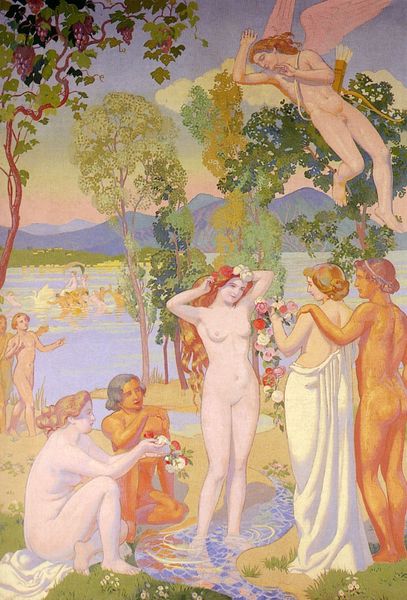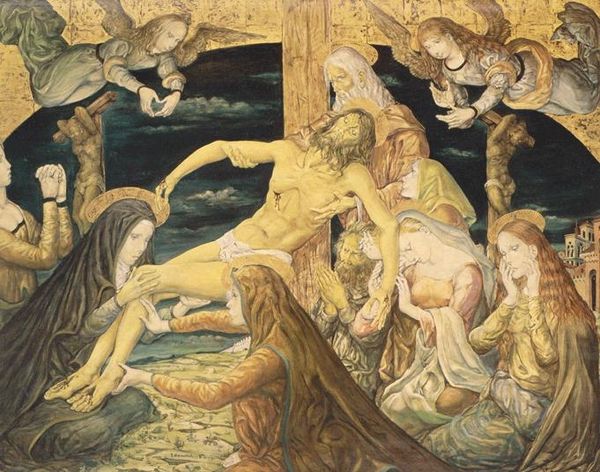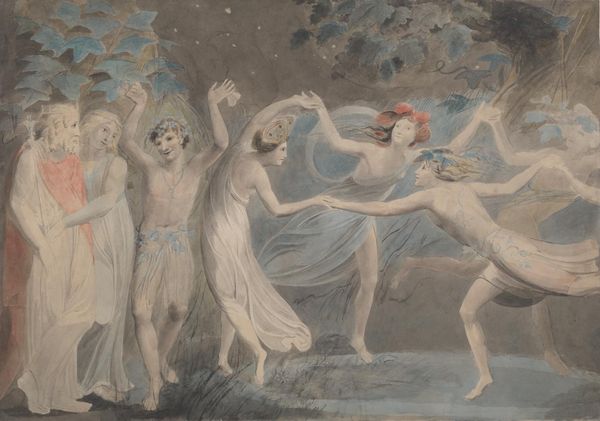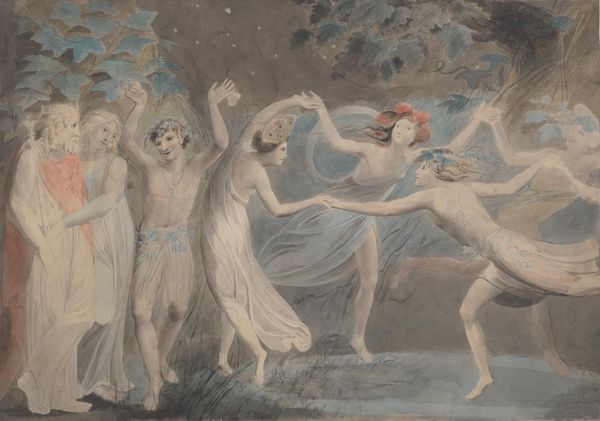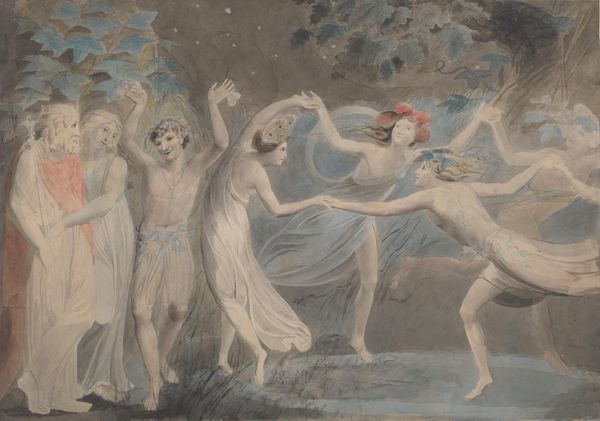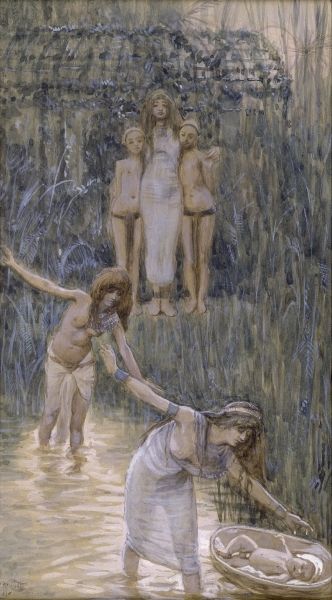
watercolor
#
landscape
#
fantasy-art
#
figuration
#
oil painting
#
watercolor
#
intimism
#
symbolism
#
watercolour illustration
#
genre-painting
#
academic-art
#
watercolor
Copyright: Public Domain: Artvee
Editor: We're looking at "Nyads and Dryads," a watercolor by Walter Crane. The nymphs and water spirit creates such a tranquil and otherworldly feeling. How do you interpret this work, considering its place in art history and its use of mythological figures? Curator: It's fascinating how Crane employs classical mythology, isn't it? Given the social context of the late 19th century, with growing industrialization, these idyllic scenes of nature served as an escapist fantasy. Think about how this imagery resonates with a public increasingly removed from rural life. What message do you think Crane conveys through his depiction of these figures? Editor: I guess it’s a kind of idealized vision of harmony with nature. There's also an erotic charge here, yet filtered through the lens of classical myth, which perhaps makes it more acceptable for the Victorian era. Curator: Exactly. The public consumption of idealized and aestheticized figures provided an outlet that was regulated by the institution’s aesthetic, and simultaneously shaped ideas around beauty and even morality. Do you think this tension, between escapism and eroticism, is successfully balanced or does one overpower the other? Editor: I'm not sure. Perhaps its intention to challenge, or rather, question established artistic norms by offering this visual commentary on social values. I'd say it balances. Curator: Very interesting! Understanding its relationship to its original audience definitely enhances our understanding of the artwork. I have also learned something new. Editor: Agreed! It definitely enriches my perspective. I learned to appreciate this beautiful work by Watercolor Crane in new historical and social dimension.
Comments
No comments
Be the first to comment and join the conversation on the ultimate creative platform.
